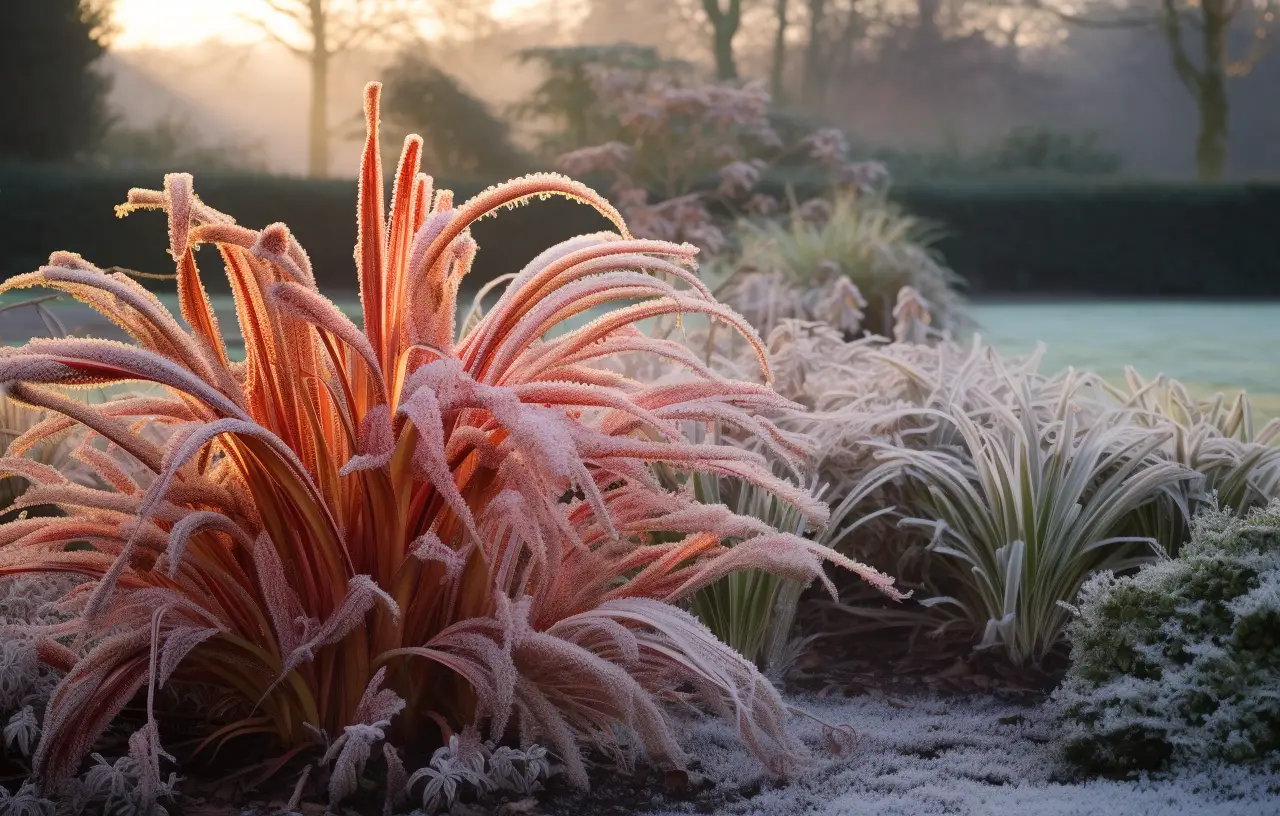How to Protect a Cordyline in the Winter

If you’ve spent the time growing this wonderful plant, you may want to know how to protect a Corydline in the Winter. The biting frost, chilly rains, and snow can pose a challenge. However, fear not, fellow gardener, for with a few simple Cordyline winter care precautions, you can ensure that your Cordyline stands tall and proud, come spring.
Understanding the Cordyline
Primarily native to the warmer regions, the Cordyline is often mistaken for a palm because of its tall, slender trunk and frond-like leaves. While many varieties are hardy, they’re not entirely immune to the perils of harsh cold weather. Many can suffer frost damage, browned leaves and slime flux
Choosing the Right Location
Even before we delve into winter care, remember that the initial placement of your Cordyline can make all the difference. A sheltered spot, preferably away from harsh winds and severe frost pockets, is ideal.
If you have a smaller cabbage palm in a pot, then consider locating it in one place during the summer months and then relocating at the first sign of a cold snap.
Winter Protection Tips
Mulching
A generous layer of mulch around the base of your Cordyline will act as an insulating blanket, keeping the roots warm. Use organic material like straw, compost, or bark.
Wrapping
When the temperature really plummets, consider wrapping the plant. Start by tying the leaves upright with a soft rope or string to reduce wind damage. Then, wrap the trunk with horticultural fleece or hessian. Ensure you secure it but avoid tying too tightly.
Watering
It might sound counter-intuitive, but ensure your Cordyline isn’t waterlogged. Soggy roots can freeze, causing more damage than dry cold.
Potted Cordylines
If your tropical beauty resides in a pot, consider moving it to a more sheltered location during a cold winter or even indoors. A greenhouse or conservatory can be a temporary winter haven.
Check for Pests
Winter might slow down many pests, but some still linger. Regularly check your plant for signs of infestations and treat promptly.
Emerging from Winter
Once the threat of the last frost or cold spell has passed, and spring whispers its arrival, it’s time to help your Cordyline recover. Carefully unwrap it, remove the protective mulch, and give it a thorough watering. Trim away any damaged or dead foliage to encourage new growth.
Common Cordyline Queries: FAQ
My Cordyline looks brown and withered after winter. Is it dead?
Not necessarily. Sometimes, the top might be damaged and contain dead leaves, but the base could still sprout new growth. Be patient and give it time.
Should I feed my Cordyline in winter?
Refrain from feeding during winter. Wait until spring, then use a general-purpose liquid fertiliser.
Can all Cordyline varieties withstand the UK winter?
While many can, it’s essential to know your specific variety. Some may need extra protection or even indoor sheltering during winter.
Why is my Cordyline drooping after frost?
A drooping Cordyline post-frost is a common concern. Frost can affect the water within the plant’s cells, causing them to expand and potentially rupture. This can lead to cell damage, resulting in drooping or wilting leaves that have turned brown.
Moreover, sustained cold can harm the plant’s vascular system, limiting its ability to transport water and nutrients, thus causing a droopy appearance. While it’s disheartening to see, don’t despair just yet. Continue your winter protection efforts, and once the temperatures rise, trim away damaged foliage. Often, with a little time and care, the Cordyline will show signs of recovery as the warmer months approach.
Conclusion
Embracing the challenge of nurturing a Cordyline through winter is a testament to your dedication as a gardener. Each leaf saved, each new sprout in spring, becomes a badge of honour. After all, gardening isn’t just about the sunny days but also about understanding and harmonising with the rhythm of nature.
To keep your garden thriving through all seasons, explore our range of guides and immerse yourself in a world where green fingers weave magic. If your Cordyline is struggling but it’s not winter-related, then head on over to read our blog about how to revive a dying Cordyline.





